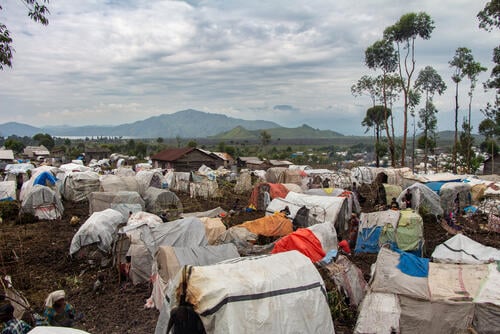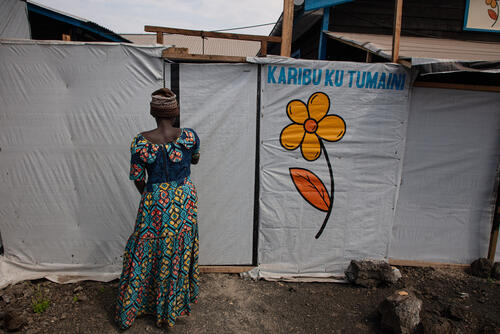
Bison in Grand Teton National Park. Photo: Jeffrey St. Clair.
While this article will be nowhere near a comprehensive review, a sampling of just three studies offers an introductory glimpse into heat’s broad capacity to govern and regulate behavior, health and death across the realm of Earth’s land animals. Some further detail will surface in subsequent paragraphs.
For a first example of heat’s broad impacts across animal species, the October 13 2008 issue of Science published an informative review article under the title, “Physiology and Climate.” The authors remind readers that “All organisms live within a limited range of body temperatures. They further explain that “the direct effects of rising temperatures include “impairments in growth, reproduction, foraging, immune competence, behaviors and competitiveness.”
The Journal of Animal Ecology picked up the story in January 2014. The authors confirm that “organisms have a physiological response to temperature, and these responses have important consequences.” “They go on to explain that “biological rates and times (e.g. metabolic rate, growth, reproduction, mortality and activity) vary with temperature.”
A third and final example comes from the September 20, 2024, issue of Science. Authors traced the history of CO2 and temperature across the last 485 million years. Authors discovered that our current era is cooler than much of this history, and C02 levels lower.
In a plain language news release, one of the authors explains that, because we are addling 40 billion tons of CO2 to the atmosphere, “We are changing the climate into a place that is really out of context for humans. The planet has been and can be warmer – but humans and animals can’t adapt that fast.”
Humans as a species of special interest
As a first example, little is more certain than that heat can kill us, and many, if not all, outdoors-minded readers have noticed news reports of hikers dying during a heat wave. Reports have included the 10-year-old boy who died after he suffered a heat-related medical emergency during a hike in Arizona.
Given the headline stories of heat-driven human mortality in the great outdoors, it’s likely no surprise that The Outdoor Industry Association would ask ”Why Does Climate Change Matter to the Outdoor Industry?”
Candidly answering its question, the Association says, “Climate change is having a direct impact on outdoor recreation. The quality of outdoor experiences are suffering as summers grow longer and hotter, winter and snowpack become more unpredictable, river flows are diminished, and devastating natural disasters become more frequent.”
The risks don’t end there.
Heat steals our food
The authors of a January 9, 2009 Science article cited evidence that “In temperate regions, the hottest seasons on record will represent the future norm in many locations.” They add, “Coping with the short-run challenge of food price volatility is daunting. But the longer-term challenge of avoiding a perpetual food crisis under conditions of global warming is far more serious.”
A Nature journal, Communications Earth & Environment, went to the heart of the pricing matter in a study titled, “Global warming and heat extremes to enhance inflationary pressures” in its March 21, 2024 issue. The article’s authors found that “Higher temperatures increase food and headline inflation persistently over 12 months in both higher- and lower-income countries.”
To the inflation of food prices, add the risk involved in simply eating and digesting it. Because digesting forces body temperature higher, how much we eat on a hot day can push our temperatures toward lethal levels.
Hail batters our solar energy
A study by Northern Illinois University researchers projects that the frequency of hailstones roughly 1½ inches or larger will rise by 15% to 75%, depending on how much greenhouse gas pollution humans emit.
Risk and Insurance journal cites researchers who found that “The solar panels rapidly being deployed across the country are vulnerable to damage from hail.”
Similarly, the Department of Energy reports that “Hail can cause invisible damage through solar cell cracking at hail diameters and speeds less than that which would break the glass..”
Heat can abort human pregnancies
Some disruptions are more pressing than others. Right alongside the prospects for pricier food, and costly hail damage to solar panels, we have to include risk of aborted pregnancies. According to the National Institute of Health’s National Library of Medicine, one research team “observed that exposure to high ambient temperature (mean > 25°C) in early pregnancy increased unobserved pregnancy loss rates. In a case–control study conducted in Nanjing, Zhao et al. found a non-linear association between high ambient temperature and increased risk of spontaneous abortions.
Heat is already forcing costs on human health and mortality
As of January 30, 2024, Nature Medicine could run a report under the title, “After millions of preventable deaths, climate change must be treated like a health emergency.”
The urgency of these findings was underscored in an Energies article, “Quantifying Global Greenhouse Gas Emissions in Human Deaths to Guide Energy Policy,” in which the authors report that “Several studies are consistent with the ‘1000-ton rule,’ according to which a future person is killed every time 1000 tons of fossil carbon are burned (order-of-magnitude estimate). If warming reaches or exceeds 2 °C this century, mainly richer humans will be responsible for killing roughly 1 billion mainly poorer humans through anthropogenic global warming, which is comparable with involuntary or negligent manslaughter.”
Similarly, authors of a 2024 Harvard Law Review analysis conclude that “in jurisdictions across the United States, fossil fuel companies could be prosecuted for every type of homicide short of first degree murder.”
We humans aren’t the only ones we’ve put at risk
A broad trend was underscored in June 13, 2022, when The Conversation published “We know heatwaves kill animals. But new research shows the survivors don’t get off scot-free.”
The authors report that “Extreme heat waves can cause birds and mammals to die en masse. But it’s more common for an animal to experience relatively mild heat stress that doesn’t kill it. Our new findings suggest that unfortunately, these individuals can suffer long-term health damage.”
Authors of a related 2024 study on the effects of hot nights conclude that “ Given the major role of sleep in health, our results suggest that global warming and the associated increase in extreme climatic events are likely to negatively impact sleep, and consequently health, in wildlife.
Bison, grizzlies, and moose
A December 2022 Ecology and Evolution study found that temperature predicted bison movement better than any other factor measured. It increased movement, but only up to a point where it put on the brakes.
Authors suggest that increased movement was driven by searching for grasses that grow better with heat, which is important if only because the bison get much of their water from foraging. However, once the temperature rose above 83F, bison movement stopped, and they rested in the shade or near cooling water, which may have saved them from heat stroke.
It’s likely not a coincidence that grizzlies choose well-shaded daybeds in the thick cover of dense forest. Under protective canopy, temperatures are at lease a bit cooler than out under direct sunlight. According to studies referred to by Western Wildlife Outreach, “In the heat of the day, grizzly bears will rest in day beds in dense vegetation.” Moreover, a Functional Ecology article reports that grizzlies can dissipate excess body heat by taking a dip in chilly water.
Reducing body heat is just as crucial to moose. A recent study in the Journal of Animal Ecology tested the hypothesis that a moose’s allocation of energy to the likes of foraging and travel can face a barrier in the form of heat dissipation limit. Under this limit, feeding and movement are impaired until an overheated animal can lose, shed, or dissipate at least some body heat.
Up to a point, a moose will be able to shed some heat in the shade alone. However, beyond that point, they narrow their bedding choice to shaded surfaces with moist soils because those soils facilitate the release of body heat. However, the authors point out that “… the importance of dissipating endogenous heat loads conductively through wet soil suggests riparian habitats also are critical thermal refuges for moose.” They quickly add that “Such refuges may be especially important in the face of a warming climate in which both high environmental temperatures and drier conditions will likely exacerbate limits to heat dissipation, especially for large, heat-sensitive animals.”
While the above strategies can save these four species from heat-determined mortality, their usefulness seems likely to diminish as heat and, with it, drought become more extreme. A 2013 Proceedings of the Royal Society B: Biological Sciences study found that if the surrounding air temperature gets hot enough, an animal could die of starvation — as a consequence of trying to avoid overheating.
Plainly enough, things won’t have to go that far to start getting ugly. Still, the extreme case cuts to the chase, and the risk of heat-driven mortality across a wide range of domestic and wild animals is a factor even now.






